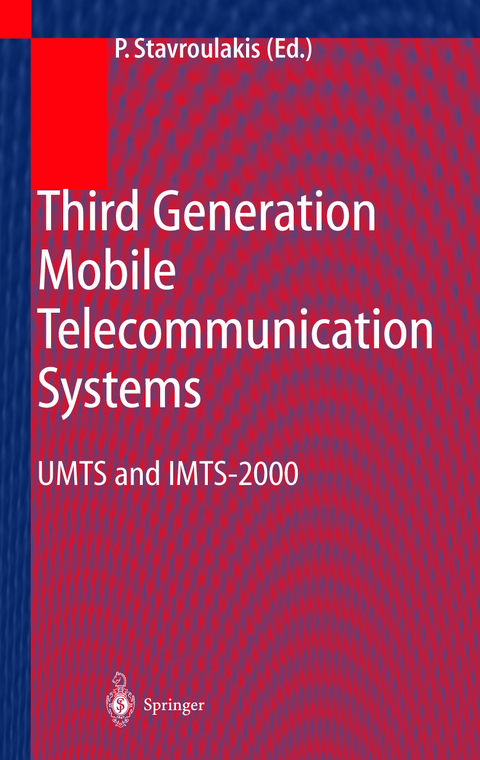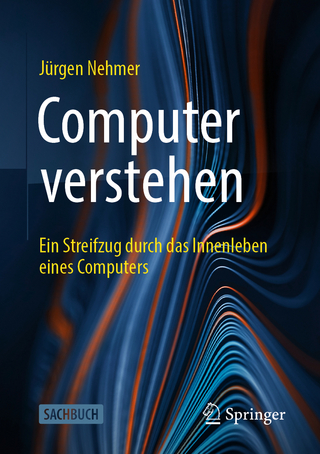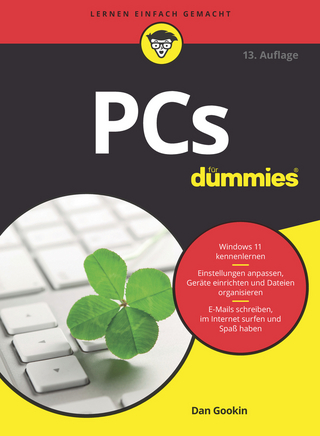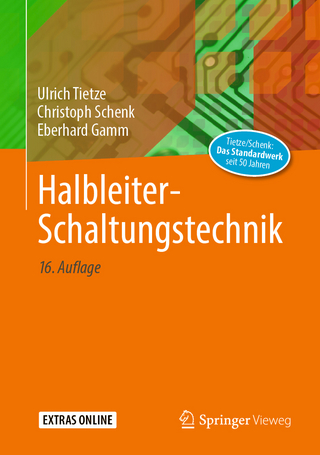
Third Generation Mobile Telecommunication Systems
Springer Berlin (Verlag)
978-3-540-67850-2 (ISBN)
One hundred years ago, the notion of transmitting information without the use of wires must have seemed like magic. In 1896, the first patent for wireless communication was granted to Marchese Guglielmo Marconi. Since then the field of wireless communications which includes cellular systems has taken various forms of development. It basically evolved through three Eras. The Pioneer Era over the period of 1860-1921, the Precellular Era over 1921-1980 and the Cellular Era after 1980 and beyond. The first generation cellular era started with the Analog Systems and evolved in the digital domain utilizing Time Division Multiple Access (TDMA) and Code Division Multiple Access (CDMA), thus comprising the Second Generation Mobile Systems. The first generation RF cellular communications systems deployed in the early to mid 1980's had air interfaces comprised of analog technology. Among them were AMPS (Advanced Mobile Phone System), NMT (Nordic Mobile Telephone), and TACS (Total Access Communications System). These were designed for use in a specific geographic area and not intended to be deployed in other areas. There was not much commonality beyond using the same air interface technology and same modulation. The air interface technology was Frequency Division Multiple Access (FDMA) and the modulation was analog FM, but with different deviations and channel spacings. The frequency bands, air interface protocols, number of channels, and data rates were different. In general, these systems provided local and national coverage.
1 Introduction.- 2 Coding.- 2.1 Introduction.- 2.2 Blind Equalization of Quadrature Partial Response-Trellis Coded Modulated Signals O.N. Ucan and H.A. Cirpan.- 2.3 Range Extension in Mobile Communications Based on Link Adaptation J. Dunlop and J. Pons.- 2.4 Application of CCMA Codes to Future Mobile Radio Communications M. Ma, N. Zein, Ph. Benachour and B. Hon.- 2.5 Low-Pow er Multi-Code Correlator for IMT-2000 Ch.-W. Ku, F.-Y. Kuo, L.-G. Chen and C.-K. Chen.- 3 Modulation.- 3.1 Introduction.- 3.2 Wireless Communications Using Spectrall y Efficient VMSKl2 Modulation H.R. Walker, J.C. Pliatsikas, C.S. Koukourlis and J.N. Sahalos.- 3.3 Modelling of a Wireless ATM Physical Layer Based on an OFDM Modulation Scheme Using Hidden Markov Model Ch. Verikoukis and J.J. Olmos.- 4 Antennas & Propagation.- 4.1 Introduction.- 4.2 Benefits of Adaptive Antennas in the Uplink ofTD-CDMA Mobile Radio Systems A. Papathanassiou, J.J. Blanz, M. Weckerle and R. Schmalenberger.- 4.3 Hybrid Adaptive Algorithm Based on Temporal Update and Spatial Spectrum Estimation for Adaptive Array Antenna K. Watanabe, I. Yoshii and R. Kohno.- 4.4 Optimisation of the cell-planning RF Design Parameters in Complex Geographic Areas S. Bouzouki, S. Kotsopoulos and G. Karagiannidi.- 4.5 Stochastic Models for Long-Term Multipath Fading Channels and their Statistical Properties Ch.D. Charalambous and N. Menemenlis.- 5 Channel Characterization & Modelling.- 5.1 Introduction.- 5.2 Wideband Modeling of Time-Variant Indoor Radio Channels F. Layer, T. Englert, R. Kattenbach and H. Früchting.- 5.3 Satellite Diversity: A Technique to improve Link Performance and Availability for Multicoverage Constellations P. Loreti and M. Luglio.- 5.4 LEO Satellite Mobile Channels: Modeling by Time Sequences of Finite State Markov Channels F. Babich, G. Lombardi, E. Valentinuzzi and O.E. Kelly.- 6 System Architecture.- 6.1 Introduction.- 6.2 Transceiver Components and Architectures for Software Defined Radio 30 Base-stations D. Efstathiou.- 6.3 Mobility Management and Resource Allocation in Multi-Layer Cellular System M. Lohi, D. Weerakoon. A.H. Aghvami.- 7 Traffic Characterization & Management.- 7.1 Introduction.- 7.2 Real-Time Learning for Traffic Characterization and Distributed Traffic Monitoring in Wireless ATM Networks A. T. Burrell and T.P. Papantoni-Kazakos.- 7.3 Analysis of an Admission Mechanism for ABR Correlated Traffic in a Multimedia ATM Wireless Network A. Lombardo, S. Palazzo and G. Schembra.- 8 Capacity.- 8.1 Introduction.- 8.2 Spectral Efficiency of Cellular Mobile Radio Systems F. Babich. G. Taricco and F. Vatta.- 8.3 Capacity Sharing Between Interfering Cells in COMA Wireless Networks D. Gerakoulis, W.Ch. Chan and E. Geraniotis.- 9 Prototypes of 3G Systems.- 9.1 Introduction.- 9.2 Power Control approaches for WCDMA MSc. I. Virtej, Prof. H. Koivo.- 9.3 Timing Acquisition in COMA Systems J. Joutsensalo and T. Ristaniemi.- 9.4 Network Synchronization in IMT-2000 COMA Systems A.M. Gogic.- 10 Services.- 10.1 Introduction.- 10.2 Fast Internet and Multimedia Services: Facing the New Challenge E. Pallis, M.C.B Smith, A.A. Alexandridis, A.Kourtis, K.Dangakis, P.Kostarakis, G. Kormentzas.- 10.3 IP Subnet Mobility over General Packet Radio Service M. Mizutani and Ch. Bonnet.- 10.4 Assessing Outage Impact on the Reliability of Mobile Wireless Networks S. Makris and J. Bennett.- 10.5 A Knowledge-based Decision Support System for the Evaluation of a Terrestrial Cellular Network Investment T. Zambarakis, N. Kokkinogenis, H. Sandalidis and P. Stavroulakis.
| Erscheint lt. Verlag | 12.3.2001 |
|---|---|
| Zusatzinfo | XI, 657 p. |
| Verlagsort | Berlin |
| Sprache | englisch |
| Maße | 170 x 244 mm |
| Gewicht | 1092 g |
| Themenwelt | Mathematik / Informatik ► Informatik ► Netzwerke |
| Informatik ► Weitere Themen ► Hardware | |
| Technik ► Elektrotechnik / Energietechnik | |
| Technik ► Nachrichtentechnik | |
| Schlagworte | Antenna • Coding • Communication • communications • Communication system • Communication Systems • IMT-2000 • Mobilfunk • Modeling • Modelling • Modulation • Multimedia • Signal • Software Defined Radio • Standard • Standards • Telekommunikation • UMTS • Universal Mobile Telecommunications System (UMTS) |
| ISBN-10 | 3-540-67850-6 / 3540678506 |
| ISBN-13 | 978-3-540-67850-2 / 9783540678502 |
| Zustand | Neuware |
| Haben Sie eine Frage zum Produkt? |
aus dem Bereich


